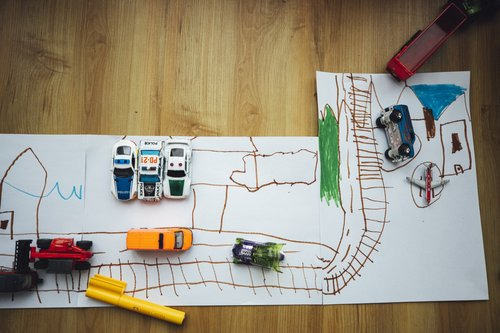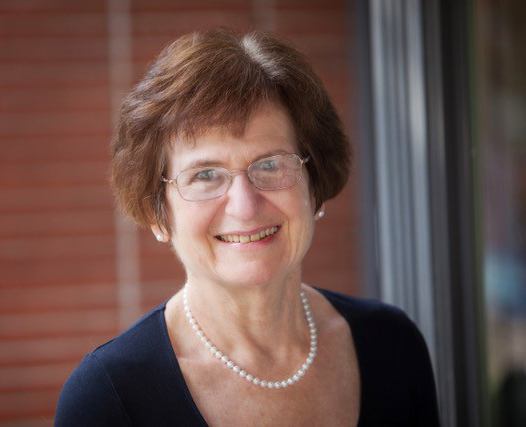You are in: Central America
Change location
You are here
Role of Make-Believe in Children’s Development

Is It Time to Believe in the Role of Make-Believe in Young Children Developing Self-Regulation?
By Laura E. Berk

First published in MethodSpace in July 2022.
Twentieth-century grand theories of development speculated that that make-believe play is a prevalent experience of early childhood that contributes vitally to optimal development. Although Erik Erikson and Jean Piaget acknowledged make-believe’s role in children’s capacity to regulate their thoughts, emotions, and behavior, it was sociocultural theorist Lev Vygotsky (1967) who granted pretense an especially powerful role in children’s advancing self-regulatory skills.
Play Skepticism
As interest in Vygotsky’s work rose from the 1980s on, empirical studies began to address his hypothesis that make-believe play and self-regulation are developmentally linked. Then, in 2013, an influential review and critique of that research appeared in Psychological Bulletin (Lillard et al., 2013). Its authors took a decidedly negative stance, stating that that evidence from correlational research, short-term longitudinal investigations, and experimental studies (providing systematic pretend-play training or other pretense opportunities) is inconsistent, methodologically flawed, and unconvincing. Any contribution of pretense, they concluded, is at best uncertain and, more likely, nonexistent. If make-believe has an impact, they remarked, it is limited to subsets of children.
The Need for Balanced Evidence
To be sure, the methodological problems in play research pointed out by Lillard et al.—for example, potential adult influence over both play and outcome variables—are best avoided. However, while Lillard et al. favor tightly controlled experimental designs with random assignment that meet the highest standard for causal inference, others pointed out that experimental pretense “treatments” might not qualify as authentic make-believe, typically defined as spontaneous, driven by child choice, and intrinsically motivated (Bergen, 2013; Berk & Meyers, 2013; Meyers & Berk, 2014). Furthermore, some investigations, especially those addressing adults’ memories of childhood play, revealed that much make-believe takes place privately, without adult awareness and influence, and often consists of lengthy child-created narratives that can persist for days, weeks, or even months (Root-Bernstein & Root-Bernstein, 1999; Singer & Singer, 1990). By contrast, adult directiveness and brevity have typically characterized pretend-play experimental conditions, yielding a basic methodological deficiency commonly pointed out in introductory textbooks: weak ecological validity.
Moreover, early findings on the make-believe/self-regulation relationship were not clearcut. Results indicated that quality of make-believe made a difference and that certain children did seem to benefit more than others—an informative finding rather than a shortcoming. In one initial study, the classroom free-play and self-regulation (as measured by cooperativenes and helpfulness during play clean-up periods) of 53 3- to 5-year-olds from middle-income families were observed in the fall of the school year and again several months later (Elias & Berk, 2002). Results revealed an association between make-believe play and future self-regulation that depended on the maturity of children’s social pretense: Only complex, sociodramatic play (involving peer interaction and at least three additional play elements, such as role play and use of substitute objects—for example, a block for a phone) was significant. Additionally, the make-believe/self-regulation relationship was strongest for children rated by their teachers as highly impulsive, suggesting that sociodramatic experiences might play an especially important role in the self-regulation of preschoolers with deficiencies in this area.
In sum, we cannot address the role of make-believe in self-regulation by limiting ourselves to rigorous experimental research. Rather, we must work with a balance of methodologies. This includes less tightly controlled, observational investigations that follow children longitudinally as well as experimental studies that approximate as closely as possible the features of make-believe that are ubiquitous in natural contexts.
Illustrative New Research
Despite Lillard et al.’s pessimistic conclusions, investigators continue to address the role of make-believe in young children’s self-regulation. Promising new research embraces the vital methodological balance just mentioned.
Consider, for example, an experiment addressing the effects of various styles of pretense on preschoolers’ executive function (EF), a set of basic cognitive skills (inhibition, flexible of shifting attention, and working memory) that are foundational to complex self-regulatory abilities such as completing multi-step tasks and cooperating with others. 179 2- to 5-year-olds from families varying widely in parental education and income were randomly assigned to one of four daily 15-minute play conditions that lasted for five weeks: (1) fantastical pretense (make-believe that went beyond children’s everyday experiences, such as going to the moon), (2) realistic pretense (for example, a pretend bus ride), (3) nonimaginative game play (such as searching for hidden objects), and (4) a business-as-usual control (normal classroom activities) (Thibodeau-Nielsen et al., 2020a). In the two pretense interventions, research assistants blind to the study’s hypotheses provided small groups of children with a make-believe theme to act out, granting them as much freedom as possible to direct their own play scripts. Pre- and post-intervention measures of EF, along with vocabulary skills and teacher-rated propensity to engage in pretense, were gathered. At pretest, the experimental conditions were equivalent on all three measures.
Findings indicated that fantastical pretense, but not the other play styles, facilitated development of EF. The researchers reasoned that compared to engaging in the well-practiced scripts of realistic pretense, creating highly imaginative, fantastical scenarios is far more cognitively demanding, likely yielding benefits for EF. Unlike their more economically advantaged agemates, however, preschoolers attending Head Start classrooms and thus largely from poverty-stricken families did not profit from the fantastical pretense intervention. One possible explanation is the slower rate of language development typically found in economically disadvantaged children (Golinkoff et al., 2019). Because language is an important contributor to complexity of make-believe, children from low-income backgrounds may have less experience engaging in elaborate pretense, which could have made it harder for them to benefit from the fantastical play intervention. Furthermore, the chronic stressors accompanying poverty have been shown to undermine young children’s EF (Lawson et al., 2016). Such stressors may have overwhelmed any impact that a relatively brief play intervention otherwise might have had.
In the first long-term prospective study on the make-believe/EF relationship, researchers delved more deeply into the role of naturally occurring pretense in EF development of poverty-stricken children (Thiebodeau-Nielsen et al., 2020b). Teacher-reported make-believe play behaviors, assessments of children’s EF, and parent-reported cumulative risk (based on such factors as parental low education, single-parent status, father absence, and parenting stress) were gathered on 191 preschoolers enrolled in Head Start classrooms. Two years later, in first grade, EF was again measured.
Results revealed that propensity to engage in make-believe during preschool was positively associated with first-grade EF after controlling for preschool EF. Moreover, pretend play moderated the relationship between cumulative risk and EF outcome: A negative association between risk and EF existed only for children reported to engage in low levels of pretend play. For children engaging in high levels of pretense, this negative association was not apparent. These findings suggest that make-believe play can serve as a protective factor in EF development for preschoolers experiencing high-risk homelives, perhaps because it offers a nonstressful context in which children voluntarily practice EF skills and engage in other developmentally challenging activities.
Conclusions
Despite Lillard et al.’s gloomy outlook on the developmental significance of make-believe play, researchers have been remarkably persistent in taking on the challenges of clarifying the role of pretense in children’s self-regulation, inspired by tenets of Vygotsky’s theory and by evidence indicating that EF skills contribute vitally to academic and social competence. Adding to the research described above, a growing number of investigations carried out during the past decade report that make-believe relates positively to early childhood self-regulatory development (see reviews in Thibodeau-Nielsen et al., 2020a, 2020b). Though most studies are short-term, findings on long-term prediction have begun to appear. As in much development research, outcomes vary with children’s attributes: Pretense seems to be particularly influential for preschoolers with self-regulation deficits. And type of make-believe is important, with cognitively and socially challenging pretense appearing more effective.
Much more needs to be uncovered about the mechanisms by which make-believe exerts it effects, individual differences in susceptibility to make-believe’s influence, effective play interventions, and long-term outcomes. Nonetheless, accumulating evidence provides ample justification for make-believe play as an active area of empirical inquiry and—during an era in which pretense has sharply receded in young children’s lives—for restoring it to a prominent place in early childhood education.
References
- Bergen, D. (2013). Does Pretend play matter? Searching for evidence: Comment on Lillard et al. Psychological Bulletin, 139, 45–48.
- Berk, L. E., & Meyers, A. B. (2013). The role of make-believe play in the development of executive function: Status of research and future directions. American Journal of Play, 6, 95–107.
- Elias, C. L., & Berk, L. E. (2002). Self-regulation in young children: Is there a role for sociodramatic play? Early Childhood Research Quarterly, 17, 216–238.
- Golinkoff, R. M., Hoff, E., Rowe, M. L., Tamis-LeMonda, C. S., & Hirsh-Pasek, K. (2019). Language matters: Denying the existence of the 30-million-word-gap has serious consequences. Child Development, 90, 985–992.
- Lawson, G. M., Hook, C. J., Hackman, D. A., & Farah, M. J. (2016). Socioeconomic status and the development of executive function: Behavioral and neuroscience approaches. In J. A. Griffin, P. McCardle, & L. S. Freund (Eds.), Executive function in preschool-age children: Integrating measurement, neurodevelopment, and translational research (pp. 259–278). Washington, DC: American Psychological Association.
- Lillard, A. S., Learner, M. D., Hopkins, E. J., Dore, R. A., Smith, E. D., & Palmquist, C. M. (2013). The impact of pretend play on children’s development: A review of the evidence. Psychological Bulletin, 139, 1–34.
- Meyers, A. B., & Berk, L. E. (2014). Make believe play and self-regulation. In L. Brooker, M. Blaise, & S. Edwards (Eds.), SAGE Handbook of Play and Learning in Early Childhood (pp. 43–55). London: SAGE.
- Root-Bernstein, R, & Root-Bernstein, M. (1999). Sparks of genius: The 13 thinking tools of the world’s most creative people. New York: Mariner Books.
- Singer, J., & Singer, D. (1990). The house of make believe. Cambridge, MA: Harvard University Press.
- Thibodeau-Nielsen, R. B., Gilpin, A. T., Nancarrow, A. F., Pierucci, J. M., Brown, M. M. (2020a). Fantastical pretense’s effects on executive function in a diverse sample of preschoolers. Journal of Applied Developmental Psychology, 68, 101137.
- Thibodeau-Nielsen, R. B., Gilpin, A. T., Palermo, F., Nancarrow, A. F., Farrell, C. B., Turley, D., et al. (2020b). Pretend play as a protective factor for developing executive functions among children living in poverty. Cognitive Development, 56, 100964.
- Vygotsky, L. (1967). Play and its role in the mental development of the child. Soviet Psychology, 5, 6–17. (Original work published 1933.)
